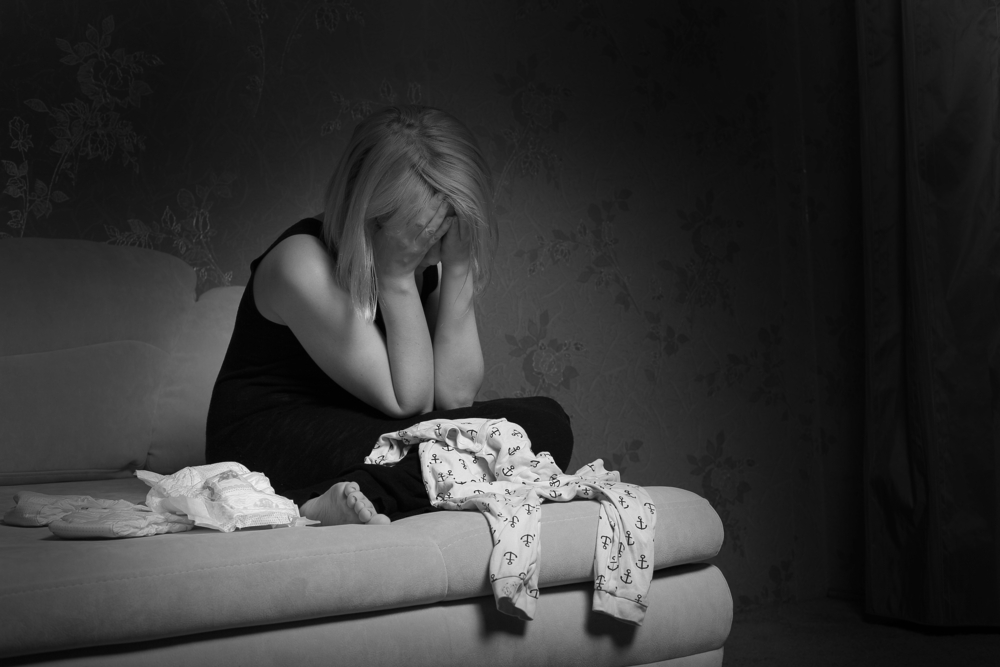How a Solo Mom and her daughter manage PMDD
For the majority of time during my 16-year-old daughter’s life, I’ve been a great single mother. I’m scrappy, which has helped when navigating the New York City school and housing systems, and despite not having a large income, I’ve taken my daughter on trips around the world and have been envied by many of my friends for having raised a remarkable kid. Once a month, however, I fall into a bad weeklong depression that makes The Strange Case of Dr. Jekyll and Mr. Hyde read almost like a Disney story. In other words, I have premenstrual dysphoric disorder (PMDD), which is a cyclical, hormone-based mood disorder that affects menstruating women.
Symptoms of PMDD might sound similar to those of premenstrual syndrome (PMS)—irritability, mood swings, bloating, sadness, and the ilk. PMDD’s symptoms, however, are akin to being hit by a truck: they come on suddenly, without warning. At their worst, I feel anger rather than irritability; utter despair rather than a light case of the doldrums; and erratic, sometimes self-destructive behavior. I get full-blown panic attacks that seize me awake in the middle of the night, stealing my breath and my reason. Rather than simply having trouble sleeping, I lie, tossing and turning, feeling unworthy of good friends and lovers, and feeling like a fraud at work. I question my parenting. I question everything. I alternately weep and go numb, unable to engage with the “real world.”
Up to 80% of women who menstruate experience PMS, but their symptoms do not generally lead to them feeling depressed or missing work or school. PMDD, however, which 2% to 8% of menstruating women experience, not only is a premenstrual disorder but also is classified as a mental illness in the fifth edition of the Diagnostic and Statistical Manual of Mental Disorders, or DSM-5 (CBS Publishers & Distributors, 2017).
Many “women’s” health issues are ignored by medicine. Hell, so are women’s bodies. (It wasn’t until 1998, after all, that the full anatomy of the clitoris was discovered.) Although PMDD was discussed by a small handful of forward-thinking doctors, it wasn’t formally classified as a mental illness in the DSM until 2013.
I’ve had the special experience of living pre- and post-diagnosis with PMDD. Before I was diagnosed with PMDD in 2012, I did what many women do when they experience mental-health issues: I ignored it. That isn’t unusual. Many women, particularly single moms, have an enormous amount on their plates.
Unlike with bipolar disorder—which women with PMDD are often misdiagnosed with—a woman with PMDD has symptoms only during the luteal phase of her cycle (post-ovulation through the beginning of her period). These symptoms worsen over time, and women living with PMDD have higher incidence rates of suicidal thoughts. Each month, as my symptoms blasted me, I powered through, heading to work and maintaining a social life as though everything were OK. At home, however, it was a little more difficult to hide. I tried to shelter my daughter from the worst of it, but she definitely also saw me at my worst, in the midst of crying fits or bursts of anger seemingly for no reason.
After my diagnosis, it took me awhile to figure out how to manage my symptoms, but over time, I suddenly felt empowered: I wasn’t crazy, I just had a disorder, which I could learn more about to help me manage my symptoms.
Some doctors suggested I start taking selective serotonin reuptake inhibitors (SSRIs), an effective management for PMDD, but I chose instead to listen to my body and treat it a little more holistically. That meant visiting herbalists and acupuncturists, one of whom suggested I start taking vitamin B. (Interestingly, in 2017, I was also diagnosed with an autoimmune disease that prevents me from properly absorbing B12 through my diet.)
My symptoms haven’t lessened—if anything, they’ve grown worse—but I’ve learned how to manage them and give myself the space and time to rest, take long walks, and let myself drift off into a book to escape reality for a bit. I’ve also promised myself to head back to my more traditional doctor and revisit the idea of taking SSRIs should my symptoms ever feel overwhelming. In other words, although I still feel the symptoms of PMDD, I no longer feel an urge to plow through them, but to listen to myself and attend to my needs—something I wish more women were told to do in our culture.
A couple years ago, my teen daughter also started to exhibit possible symptoms of PMDD. Though it’s frustrating that either of us needs to deal with all this, it’s also a relief to have lived with the syndrome for so many years, as I can now offer suggestions and help her make medical and holistic decisions that will lead to a strong, healthy, and happy life.
Are you a Solo Mom with a medical challenge? ESME has a community where you will find connection and support from other moms going through similar challenges.
Melissa Banigan is the founder and CEO of Advice Project Media, a nonprofit that offers media, writing, and travel services for youth and teens around the world. She is also a freelance journalist whose work has appeared in many news outlets including the Washington Post, the BBC, and NPR, among many others, with work forthcoming in National Geographic.









